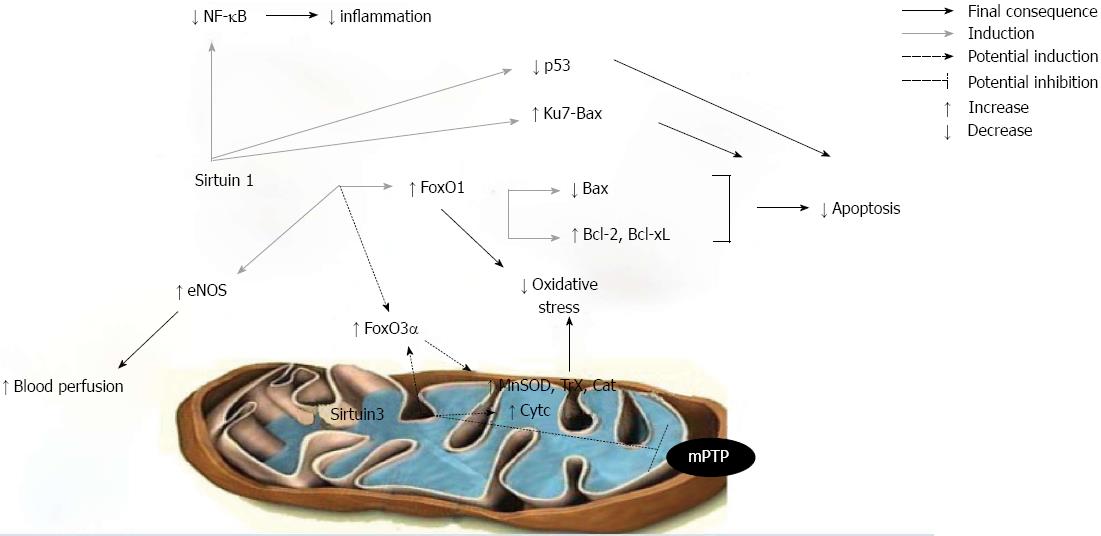Copyright
©2013 Baishideng Publishing Group Co.
World J Gastroenterol. Nov 21, 2013; 19(43): 7594-7602
Published online Nov 21, 2013. doi: 10.3748/wjg.v19.i43.7594
Published online Nov 21, 2013. doi: 10.3748/wjg.v19.i43.7594
Figure 2 Protective role of sirtuin 1 and suggestive role of sirtuin 3 during reperfusion.
Sirtuin 1 (SIRT1) inhibits inflammation through inhibition of nuclear factor kappa B and activates endothelial nitric oxide synthase for a better microcirculation. SIRT1 downregulates apoptosis through multiple pathways, for example, inhibiting p53 transcriptional activity or favoring the binding between Ku70 and Bax. SIRT1 also enhances forkhead box-containing protein O 1 (FoxO1) transcriptional activity, resulting in Bax downregulation and in the upregulation of B cell lymphoma-2 and Bcl-like X. Deacetylation of FoxO1 by SIRT1 also results in lessening oxidative stress, whereas the same effect may be achieved by deacetylation of forkhead box-containing protein 3 alpha (FoxO3α). Sirtuin 3 (SIRT3) is suggested to contribute to decrease in oxidative stress either by a direct interaction with mitochondrial anti-oxidant enzymes [manganese superoxide dismutase (MnSOD), thioredoxin system (Trx), cytochrome (Cyt)] or by enhancing FoxO3α to transcribe MnSOD and Cat. Mitochondrial permeability transition pore (mPTP) may also be inhibited by SIRT3 and result in less production of oxidative stress. NF-κB: Nuclear factor kappa B; eNOS: Endothelial nitric oxide synthase; Bcl-2: B cell lymphoma-2; Bcl-xL: Bcl-like X; Bax: Bcl-2-associated X; Cat: Catalase.
- Citation: Pantazi E, Zaouali MA, Bejaoui M, Folch-Puy E, Abdennebi HB, Roselló-Catafau J. Role of sirtuins in ischemia-reperfusion injury. World J Gastroenterol 2013; 19(43): 7594-7602
- URL: https://www.wjgnet.com/1007-9327/full/v19/i43/7594.htm
- DOI: https://dx.doi.org/10.3748/wjg.v19.i43.7594









